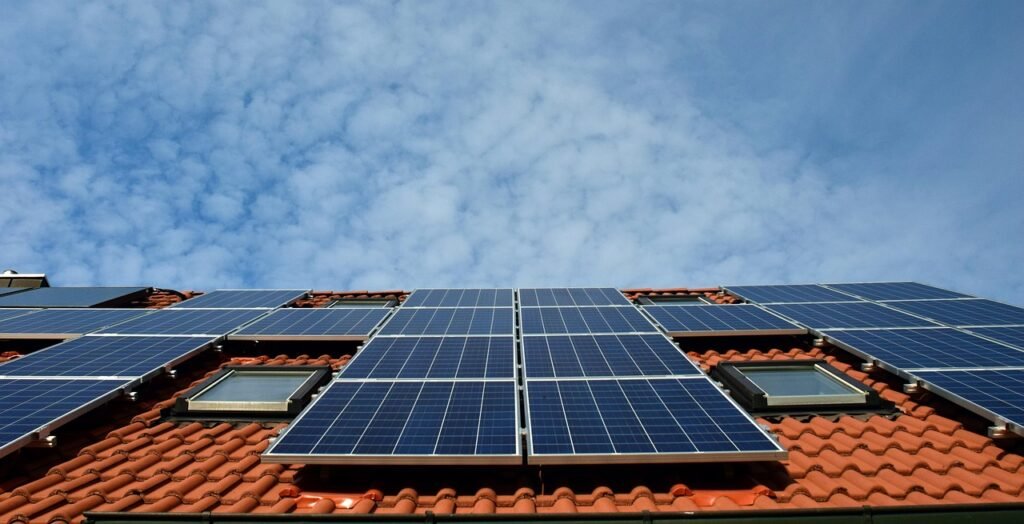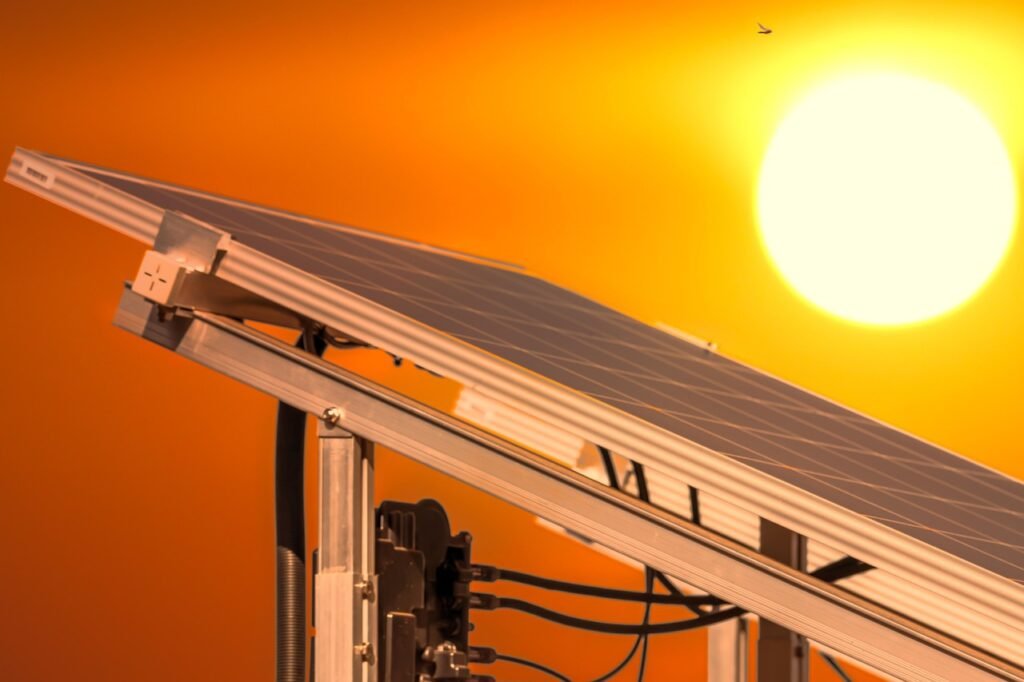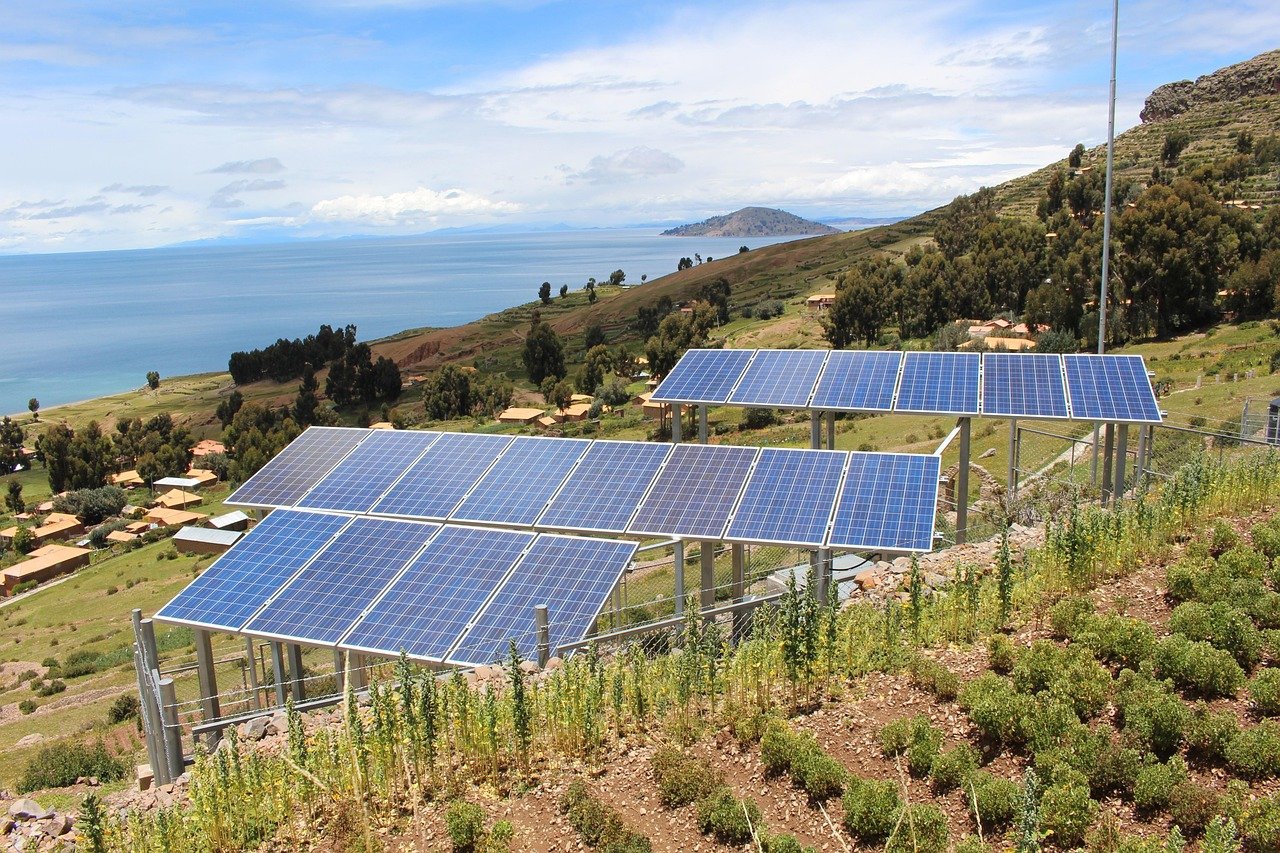Are you planning to generate your own electricity for off-grid living and want a clear, practical guide to the options, sizing, and decisions you’ll face?
How Do You Generate Power For Off-Grid Living?
Living off-grid means you take responsibility for producing, storing, and managing your own electricity. This article walks you through the generation options, how to size systems, what components you’ll need, safety and maintenance considerations, and practical tips so you can plan a reliable and cost-effective system.
Understand Your Energy Needs
Before you choose generation methods or equipment, you must know how much energy you actually use. Accurate load assessment saves money, prevents undersizing, and helps you design a resilient system.
Inventory Your Loads
List every electrical device you plan to run: lights, refrigerator, pumps, heating or cooling devices, electronics, and any intermittent loads. Be honest about usage patterns—weekday versus weekend behavior and seasonal changes can change energy needs significantly.
Calculate Daily Energy Use
Convert watts and hours into watt-hours (Wh) or kilowatt-hours (kWh) to understand daily consumption. Multiply each device’s wattage by hours of use per day and sum them to determine total daily energy requirements.
Sample load calculation:
| Device | Wattage (W) | Hours/Day | Daily Energy (Wh) |
|---|---|---|---|
| LED lights (10 fixtures) | 100 | 5 | 500 |
| Refrigerator (efficient) | 150 | 12 | 1,800 |
| Well pump (intermittent) | 800 | 0.5 | 400 |
| Laptop and electronics | 100 | 4 | 400 |
| Water heater (on-demand setup) | 0 | 0 | 0 |
| Total | — | — | 3,100 Wh (3.1 kWh) |
Use conservative numbers for efficiency losses (system losses, inverter losses, battery charging/discharging), typically adding 20–30% to account for real-world inefficiencies.
Consider Peak and Surge Loads
Motors, compressors, and pumps draw high inrush currents at startup—often several times their running wattage. You need an inverter and generator capable of handling those surges. Factor in starting watts when selecting your inverter and generator.

This image is property of pixabay.com.
Primary Off-Grid Generation Options
You can rely on a single generation source or combine multiple technologies for redundancy and better performance. Each source has strengths, weaknesses, and site-specific requirements.
Solar Photovoltaic (PV)
Solar PV is the most common choice for off-grid systems because of modularity and declining costs. Panels convert sunlight to DC electricity; you then store it in batteries or use it through an inverter.
Solar works best with proper siting: unshaded, south-facing (in the Northern Hemisphere) panels at an optimal tilt. Performance varies with seasons, and energy production is predictable when you have solar resource data for your location.
Pros and cons of solar:
| Pros | Cons |
|---|---|
| Scalable and modular | Requires daylight and adequate sun hours |
| Low operating costs | Production declines in winter/overcast weather |
| Low maintenance | Needs batteries for 24/7 power |
Wind Turbines
If your site has consistent wind (average annual speeds above ~4.5–5.5 m/s or ~10–12 mph), small wind turbines can be a great complement to solar. Wind often produces power at night and during storms when solar is low.
Site assessment is critical: local obstructions, turbine height, and turbulence determine actual output. Maintenance and moving parts mean you should plan for repairs and inspections.
Micro-Hydro Power
Micro-hydro provides continuous, reliable generation when you have flowing water with sufficient head and flow. Unlike solar and wind, micro-hydro can deliver consistent power year-round if the water source is steady.
Micro-hydro systems require specific site characteristics (head, flow) and more complex permitting in many regions. When feasible, hydro can be the most cost-effective long-term option.
Backup and Prime Mover Generators
Internal combustion generators (diesel, gasoline, propane, natural gas) are commonly used for backup or additional generation during low renewable production periods. They provide predictable power on demand but require fuel, storage, and maintenance.
Generators make sense as a secondary source for extended cloudy or windless stretches, or as a primary source where renewables are impractical.
Comparison of common fuels:
| Fuel | Pros | Cons |
|---|---|---|
| Diesel | Fuel-dense, efficient, durable | Fuel odor, storage issues, emissions |
| Propane | Clean burning, long shelf life | Lower energy density, cost |
| Gasoline | Widely available | Less stable storage, higher maintenance |
| Natural gas | Continuous supply (if piped) | Needs local infrastructure |
Hybrid Systems
Combining PV, wind, hydro, and generators gives you complementary production profiles and increased reliability. Hybrid systems can lower required battery capacity and reduce generator runtimes, but they add complexity and higher upfront cost.
Energy Storage: Batteries and Alternatives
Storage is the key to off-grid living. It smooths supply and demand, storing excess generation for use during low-output periods. Choosing the right battery technology affects cost, lifespan, and maintenance.
Battery Chemistry and Characteristics
Battery types for off-grid use include flooded lead-acid, AGM, gel, and lithium (LiFePO4). Each has distinct pros and cons around cost, cycle life, depth of discharge (DoD), maintenance, and temperature tolerance.
Battery comparison:
| Type | Typical DoD | Cycle Life | Maintenance | Pros | Cons |
|---|---|---|---|---|---|
| Flooded lead-acid | 50% | 500–1,000 | Regular watering, equalization | Lower initial cost | Heavy, ventilation needed |
| AGM/gel (sealed VRLA) | 50–60% | 500–1,200 | Low | Maintenance-free, safer | More expensive than flooded |
| LiFePO4 (lithium) | 80–100% | 2,000–5,000+ | Minimal | Lightweight, long life, high DoD | Higher upfront cost |
You should consider usable capacity (account for DoD), round-trip efficiency (lithium ~90–95%, lead-acid ~80–85%), and temperature performance when choosing battery chemistry.
Sizing Battery Capacity
Decide how many days of autonomy you need—commonly 1–5 days depending on reliability targets. Calculate battery capacity in amp-hours or kWh based on daily energy use and desired autonomy.
Example sizing:
- Daily load: 3.1 kWh
- Desired autonomy: 2 days -> 6.2 kWh usable
- Battery type DoD: LiFePO4 at 80% usable -> Required nominal capacity = 6.2 / 0.8 = 7.75 kWh
- Round up to a commercially available size (e.g., 8 kWh)
Always add a safety margin for aging, temperature effects, and unexpected loads.
Battery Management Systems and Inverters
A Battery Management System (BMS) protects lithium battery packs from over-voltage, under-voltage, over-current, and temperature extremes. For lead-acid, charge controllers and proper charging regimes (bulk, absorption, float, equalization) protect battery health.
Inverters convert DC battery power to AC for typical household loads. You’ll need an inverter sized for continuous loads and surge demands. Inverter-chargers combine inverter functionality with automatic charging capability from generators or AC sources.
Types of inverters:
- Pure sine wave: Compatible with sensitive electronics and motors.
- Modified sine wave: Cheaper, but can cause noise and inefficiencies with some appliances.
- Off-grid/standalone inverter-chargers: Built for battery-based systems with built-in ATS and generator integration.

This image is property of pixabay.com.
Balance of System Components
Beyond generation and storage, several components ensure safe and functional system operation.
Charge Controllers: MPPT vs PWM
Charge controllers regulate the current from PV or wind to charge batteries. MPPT (Maximum Power Point Tracking) controllers capture 10–30% more energy under many conditions compared to PWM controllers, especially with higher-voltage arrays and colder temperatures.
MPPT is typically preferred for off-grid systems due to improved performance and flexibility in array/inverter sizing.
Wiring, Combiner Boxes, and Protection
Proper wiring, fuses, circuit breakers, combiner boxes, and disconnects protect equipment and people. Use appropriate wire gauges to minimize voltage drop, and select breakers sized to component ratings. Add surge protection for lightning-prone areas.
Monitoring and Controls
A system monitor helps you see battery state-of-charge, generation, loads, and historical trends. Smart controllers can automate generator start/stop, load shedding, and optimize charging to extend battery life.
System Sizing Example: Solar + Battery + Inverter
Working through a realistic example helps you see how components fit together.
Assumptions:
- Daily load: 3.1 kWh (from earlier example)
- Peak sun hours average: 4 hours/day
- System losses and inefficiencies: 25% (inverter, wiring, battery)
- Desired autonomy: 2 days
- Battery chemistry: LiFePO4 (80% usable DoD)
Step 1 — Calculate required daily generation: 3.1 kWh * 1.25 = 3.875 kWh per day (accounting for losses)
Step 2 — Solar array sizing: Required PV = 3.875 kWh / 4 hours = 0.96875 kW ≈ 1.0 kW Add margin for winter and cloudy conditions; choose 1.5–2.0 kW array.
Step 3 — Battery sizing: Usable battery = 3.1 kWh * 2 days = 6.2 kWh Nominal battery capacity = 6.2 / 0.8 = 7.75 kWh -> Round up to an 8–10 kWh bank.
Step 4 — Inverter sizing: Continuous load capacity: consider simultaneous loads. If total worst-case continuous load is 1.5 kW, choose a 2–3 kW inverter. If motor starting surges cause 4x surge, choose inverter with surge rating to match or plan generator support.
Summary table:
| Component | Calculated Size | Recommended |
|---|---|---|
| PV array | ~1.0 kW | 1.5–2.0 kW |
| Battery | 7.75 kWh nominal | 8–10 kWh LiFePO4 |
| Inverter | 1.5 kW continuous | 2–3 kW pure sine with surge |
These numbers are illustrative; site-specific solar data, winter loads, and growth plans will change final sizes.

This image is property of pixabay.com.
Installation, Safety, and Codes
Safety and compliance matter. Proper installation minimizes fire risk, protects equipment, and ensures your insurance and any permits are valid.
Permits and Local Regulations
Check local building codes, electrical codes, and zoning rules. Some areas require permits for PV arrays, battery banks, generators, and hydro intakes. If you plan to sell excess power or install a generator with emissions, additional regulations may apply.
Battery Safety and Ventilation
Flooded lead-acid batteries need ventilation to exhaust hydrogen gas during charging. Lithium batteries have different safety profiles but require proper BMS, temperature control, and approved enclosures. Store batteries off the ground, in a temperature-moderated area, and away from extreme heat.
Grounding and Lightning Protection
Proper grounding and bonding protect against electrical faults and lightning. Use surge arrestors and grounding rods per local code. Consider lightning protection systems if your site is in a high-risk area.
Operation and Maintenance
A reliable off-grid system requires regular checks and preventive maintenance.
Routine Inspections
Check PV modules for dirt, shading, and physical damage. Inspect wiring, junction boxes, and connections for corrosion or loose connections. Monitor battery voltage and state-of-charge trends.
Battery Maintenance
For flooded batteries, top up distilled water and perform equalization charges per manufacturer recommendations. For sealed batteries, monitor voltages and temperatures closely and replace aging modules proactively.
Generator Maintenance
Change oil and filters per hours of operation, run the generator periodically to prevent fuel and mechanical issues, and keep spare parts like belts and filters on hand.

Costs, Payback, and Incentives
Upfront costs vary widely based on technologies, scale, and labor. Generally, solar with batteries or a hybrid setup will cost thousands to tens of thousands of dollars for a modest home.
Typical Cost Ranges
- Small solar + battery setups for tiny homes: $5,000–$15,000
- Full household off-grid systems: $15,000–$60,000+
- Micro-hydro or large wind farms: variable, often higher due to site work
Costs include panels/turbines, batteries, inverters, controllers, wiring, mounting, labor, permitting, and site preparation. Factor in long-term savings from avoided utility bills and potential incentives (where available).
Incentives and Financing
Some regions offer tax credits, rebates, or grants for renewable energy systems, though incentives for purely off-grid systems can be limited. Check local, state, and federal programs, and consider financing or staged installations if upfront costs are a barrier.
Tips to Reduce Load and Increase Efficiency
Reducing your energy needs is often the best and cheapest first step. Every watt you save reduces the size and cost of your generation and storage systems.
Energy-Efficient Appliances and Behavior
Choose efficient refrigerators, LED lighting, induction cooktops, and ENERGY STAR-rated appliances. Manage usage patterns: run heavy loads during peak generation times, and stagger high-power devices.
Heating and Cooling Strategies
Space heating and cooling usually drive the largest loads. Use passive design (insulation, airtightness, solar gain), wood or propane heating, heat pumps where feasible, and zoned heating to limit electrical demand.
Use DC Where Practical
Direct-DC appliances or circuits reduce inverter losses. In off-grid tiny homes, DC refrigeration, fans, or LED lighting can be more efficient when paired directly to battery banks.

Common Mistakes to Avoid
Many off-grid projects stumble on predictable issues. Anticipating these will save frustration and expense.
- Undersizing batteries or generators for worst-case scenarios.
- Ignoring surge/starting loads from motors and compressors.
- Poor siting for solar or wind, leading to underperformance.
- Skimping on monitoring and protection equipment.
- Neglecting maintenance schedules, especially for batteries and generators.
Final Checklist Before Going Off-Grid
Use this checklist to validate your plan before purchasing equipment or starting installation.
- Have you done a detailed load inventory with seasonal variations?
- Have you chosen a primary generation source based on site resources?
- Did you size batteries with the desired autonomy and DoD in mind?
- Are surge and peak loads accounted for in inverter/generator specs?
- Have you prepared for permits, zoning, and local codes?
- Is there a maintenance plan and spare parts list?
- Do you have monitoring and safety devices (disconnects, fuses, surge protection)?
- Have you budgeted for unexpected costs and contingencies?
Frequently Asked Questions
You likely have specific questions; here are answers to common ones.
Can you live completely off-grid with no generator?
Yes, many people live without a generator using oversized renewables and battery banks, but you must accept higher capital costs and meticulous energy management—especially in climates with long cloudy winters.
How many days of battery backup do you need?
Common practice is 1–3 days for moderate reliability; 3–5+ days if you want high resilience in extended low-generation seasons or remote locations.
Is lithium always better than lead-acid?
Lithium offers longer life, higher usable DoD, and better efficiency, but it has a higher upfront cost. Over the long term, lithium often becomes more economical due to cycle life and lower maintenance, but lead-acid remains useful for budget-constrained setups.
How do you handle heating and hot water off-grid?
Options include wood, propane, solar thermal, heat pumps, and electric heaters. Most off-grid households rely on a combination: electric for short, high-efficiency needs and fossil or biomass for base load heating.
Closing Thoughts
Designing and operating an off-grid power system is a combination of engineering, practical trade-offs, and lifestyle choices. If you accurately assess your loads, choose generation methods suited to your site, and size storage and inverters correctly, you can achieve a reliable, comfortable off-grid life. Take time to plan carefully, account for the realities of weather and seasons, and prioritize safety, maintenance, and monitoring so your system performs well for years.
If you’d like, you can provide your specific daily load numbers and site information (location, average sun hours/wind data, or water flow) and I can help you run a tailored sizing calculation and equipment list.

